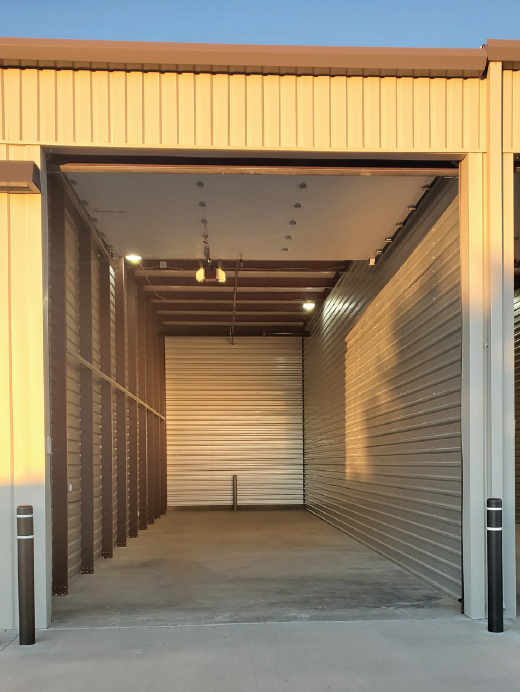Contact us today, and an RV unit leasing specialists will work with you to find the right unit for your RV, boat or other vehicle.

Price: starting at $495 per month
- 6 or 12-month lease options
- Online bill pay
- Autopay
RV Condo Specs
- Width: 14 feet
- Height: 16 feet
- Length: 45 – 50 feet
Vehicle storage guidelines
To ensure a safe and seamless experience, be sure to provide these items when storing your vehicle:
- Bring your vehicle registration and proof of insurance
- All vehicles must have current license plates
Preparing your RV for storage
When it comes to RV storage, the best thing to do to avoid missing any steps is to make a checklist. Start with utilities like turning off heat, electricity and AC circuit breakers. Here are a few tips to get you started:
Inspect and unplug electrical devices and the battery.
Your RV storage checklist should also include inspecting all devices that could drain the battery if you forget to turn them off, including alarms, shut-off valves, TV antenna boosters and any other plug-in electrical element inside the RV. To be extra safe, disconnect the negative cable on your battery. If you’re storing your RV during the winter and your area experiences freezing temperatures, it’s best to remove your battery entirely and store it in a room-temperature place.
Clean out your water tanks.
Clean-out jobs for RV storage should cover sewage tanks and water tanks. Empty both the wastewater and the freshwater tanks at a dump station before storing the RV. Also empty toilets and the water heater. One recommended way of cleaning out your tanks is to fill them with a mixture of water and baking soda or bleach, then drive your RV around for a short period of time so that the liquid sloshes around, cleaning out your tanks. Make sure to empty the tanks immediately afterwards.
Dry out your pipes.
After your tanks have been cleaned out, it’s time to attend to your pipes. This is particularly important if you’re storing your RV during the winter, when water can freeze and expand, bursting your pipes. It’s impossible to completely dry out your pipes, but one way of expelling as much moisture as possible is to send compressed air through the system. Consult your owner’s manual or an RV mechanic before doing so, as compressed air can damage some plumbing systems. Otherwise, your safest bet is to add antifreeze to the system in sufficient amounts to ensure that all pipes have been treated. Don’t forget to pour a little antifreeze down every drain and toilet in your RV as well.
Close off the gas tank.
Propane tanks should be topped off and gas supplies shut off. Remove propane tanks if possible and store them somewhere cool and dry, like a basement. Turn off any appliances that use gas (stoves, ovens, furnaces, water heaters).
Take care of the engine.
Change or top off your oil, radiator, windshield wiper fluid and brake fluid. Add antifreeze to the radiator. Fill up your gas tank, adding the appropriate amount of fuel stabilizer along the way. Filling your tank will prevent moisture from building up in your tank and corroding the material, while the stabilizer will make sure the fuel doesn’t break down. Run the engine for a few minutes so that the stabilizer can spread.
Clean it out.
Empty and unplug your refrigerator, then leave the door open with a bucket underneath so that the ice in your freezer thaws. Thoroughly clean the RV of any food or crumbs. Take any perishables out of your vehicle. It’s even a good idea to spray ant killer or leave ant traps inside the RV. Lubricate the hinges on all doors.
